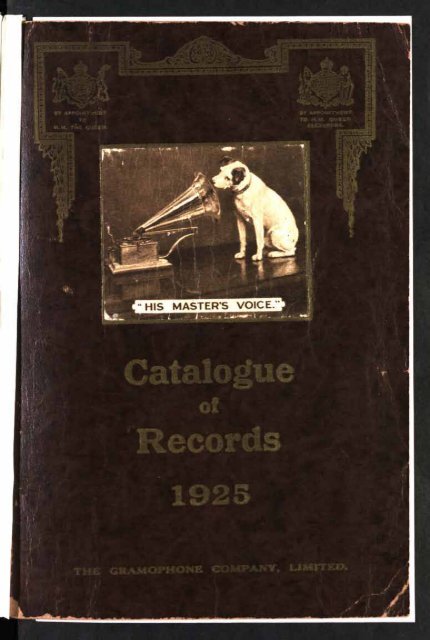- Crow Knight: Waltz Of The Knight Mac Os X
- Crow Knight: Waltz Of The Knight Mac Os 8
- Crow Knight: Waltz Of The Knight Mac Os Catalina
- Crow Knight: Waltz Of The Knight Mac Os 7
- Crow Knight: Waltz Of The Knight Mac Os Download
- Shovel Knight is a sweeping classic action adventure saga with awesome gameplay, memorable characters, and an 8-bit retro aesthetic. The soundtrack played a critical role in the game since day one and continues to be a pillar of each new game!
- - 10.2.x. 200 MHZ PowerPC with 2x CD-ROM and 32MB Ram, monitor set to THOUSANDS OF COLORS (or higher). Recommended: 300 MHZ PowerPC with 6x CD-ROM and 64MB Ram.Screensaver requires OS 10.x Due to variances in hardware, we can't guarantee playback on all machines. Recorded and mixed at Abbey Road Studios, London.
- Get more done with the new Google Chrome. A more simple, secure, and faster web browser than ever, with Google's smarts built-in.
- < Previous
- Next >
Title
Author
Date of Award
1-1-2016
Document Type
The Knights of the Forest was an 1863 secret society that formed in Mankato, MN, during the aftermath of the U.S.-Dakota War. They took an oath to advocate for the banishment of 'all Indians' from the state of Minnesota. But newspaper articles written by and about four members show that the organization was only concerned with the exile of the Ho-Chunk people, who had not participated in the U.S.-Dakota War.
Dissertation
Degree Name
Ph.D. in History
Department
Arch Dalrymple III Department of History
First Advisor
Elizabeth A. Payne

Crow Knight: Waltz Of The Knight Mac Os X
Second Advisor
Debra J. Moore
Third Advisor
Shennette M. Garrett-Scott
Relational Format
dissertation/thesis
Abstract
The dissertation explores the intersection of black racial uplift strategies, black women's entry and marginalization within distinctly male-dominated spaces such as fraternal orders, and institutional racism, specifically the implementation of regulatory policies to hinder predominately black communities from accessing state programs and funding resources. It demonstrates how African Americans in the Mississippi Delta circumvented Jim Crow practices that restricted black Mississippians access to facilities and funding. It acknowledges the comprehensive health care initiative that provided African Americans with autonomous medical care. It complicates the narrative that defined civil rights strictly within the framework of the franchise and integration of public schools, city transit systems, and leisure activities. As early as the 1930s, the International Order of Twelve Knights and Daughters of Tabor argued that access to quality medical care was in fact a right afforded to all citizens, irrespective of race. Additionally, the hospital emerged as a symbol of black entrepreneurship and advancement. The hospital represented black Mississippians to articulate and implement their own visions of freedom as they demanded full inclusion in southern society. For the hundreds of black residents of Mound Bayou, Mississippi, full inclusion in society included access to modern health care. The dissertation considers the gender dynamics of fraternal organizations as well as the medical profession. It complicates the role of women within African American fraternal orders, particularly the International Order of Twelve Knights and Daughters of Tabor. The dissertation explores the distribution of influence and the ways in which black women fraternal leaders, on occasion, successfully wrestled power from male leaders to advance their own visions. Considering women fraternal leaders were tasked with ensuring the organization had sufficient funds in its coffers, they formed impressive coalitions of middle-class and working-class women who identified needs within the community and allocated resources at their discretion. The dissertation examines the intricacy of the strategies employed by black women fraternal leaders as they challenged the predominate male-vision for the organization and the community. The dissertation interrogates role of state regulation and state actors including the Mississippi State Board of Health, Mississippi Commission on Hospital Care, and William Waller, Governor of Mississippi 1972 – 1976 who targeted the black medical professionals including midwives and nurses as well as black institutions in the 1920s, 1940s and again in the 1960s as the profitability of treating poor and elderly patients increased with the implementation of Medicaid and Medicare. The dissertation identifies three transformative pieces of legislation: the Maternity and Infancy Act of 1921, commonly called the Sheppard-Towner Act; the nationally popular yet racially discriminatory Hospital Survey and Construction Act of 1946, commonly referred to as the Hill-Burton Act; and the with Anti-Poverty programs of the 1960s, the implementation of federal legislation by state agencies resulted in the systematic removal of blacks from the medical profession. As state regulators imposed ridged regulations which led to the disappearance of black institutions, particularly, black hospitals, black women health care providers expanded their responsibilities to ensure the medical, mental, and nutritional needs of patients and residents were adequately addressed, in spite of the economic limitations of the hospital and its founding organization.
Recommended Citation

Crow Knight: Waltz Of The Knight Mac Os X
Second Advisor
Debra J. Moore
Third Advisor
Shennette M. Garrett-Scott
Relational Format
dissertation/thesis
Abstract
The dissertation explores the intersection of black racial uplift strategies, black women's entry and marginalization within distinctly male-dominated spaces such as fraternal orders, and institutional racism, specifically the implementation of regulatory policies to hinder predominately black communities from accessing state programs and funding resources. It demonstrates how African Americans in the Mississippi Delta circumvented Jim Crow practices that restricted black Mississippians access to facilities and funding. It acknowledges the comprehensive health care initiative that provided African Americans with autonomous medical care. It complicates the narrative that defined civil rights strictly within the framework of the franchise and integration of public schools, city transit systems, and leisure activities. As early as the 1930s, the International Order of Twelve Knights and Daughters of Tabor argued that access to quality medical care was in fact a right afforded to all citizens, irrespective of race. Additionally, the hospital emerged as a symbol of black entrepreneurship and advancement. The hospital represented black Mississippians to articulate and implement their own visions of freedom as they demanded full inclusion in southern society. For the hundreds of black residents of Mound Bayou, Mississippi, full inclusion in society included access to modern health care. The dissertation considers the gender dynamics of fraternal organizations as well as the medical profession. It complicates the role of women within African American fraternal orders, particularly the International Order of Twelve Knights and Daughters of Tabor. The dissertation explores the distribution of influence and the ways in which black women fraternal leaders, on occasion, successfully wrestled power from male leaders to advance their own visions. Considering women fraternal leaders were tasked with ensuring the organization had sufficient funds in its coffers, they formed impressive coalitions of middle-class and working-class women who identified needs within the community and allocated resources at their discretion. The dissertation examines the intricacy of the strategies employed by black women fraternal leaders as they challenged the predominate male-vision for the organization and the community. The dissertation interrogates role of state regulation and state actors including the Mississippi State Board of Health, Mississippi Commission on Hospital Care, and William Waller, Governor of Mississippi 1972 – 1976 who targeted the black medical professionals including midwives and nurses as well as black institutions in the 1920s, 1940s and again in the 1960s as the profitability of treating poor and elderly patients increased with the implementation of Medicaid and Medicare. The dissertation identifies three transformative pieces of legislation: the Maternity and Infancy Act of 1921, commonly called the Sheppard-Towner Act; the nationally popular yet racially discriminatory Hospital Survey and Construction Act of 1946, commonly referred to as the Hill-Burton Act; and the with Anti-Poverty programs of the 1960s, the implementation of federal legislation by state agencies resulted in the systematic removal of blacks from the medical profession. As state regulators imposed ridged regulations which led to the disappearance of black institutions, particularly, black hospitals, black women health care providers expanded their responsibilities to ensure the medical, mental, and nutritional needs of patients and residents were adequately addressed, in spite of the economic limitations of the hospital and its founding organization.
Recommended Citation
Crow Knight: Waltz Of The Knight Mac Os 8
Sims, Katrina Rochelle, 'Take the Mountain': The International Order of Twelve Knights And Daughters of Tabor and The Black Health Care Initiative in the Mississippi Delta, 1938 – 1983' (2016). Electronic Theses and Dissertations. 1430.
https://egrove.olemiss.edu/etd/1430
Crow Knight: Waltz Of The Knight Mac Os Catalina
Included in
To view the content in your browser, please download Adobe Reader or, alternately,
you may Download the file to your hard drive.
Crow Knight: Waltz Of The Knight Mac Os 7
Crow Knight: Waltz Of The Knight Mac Os Download
NOTE: The latest versions of Adobe Reader do not support viewing PDF files within Firefox on Mac OS and if you are using a modern (Intel) Mac, there is no official plugin for viewing PDF files within the browser window.

